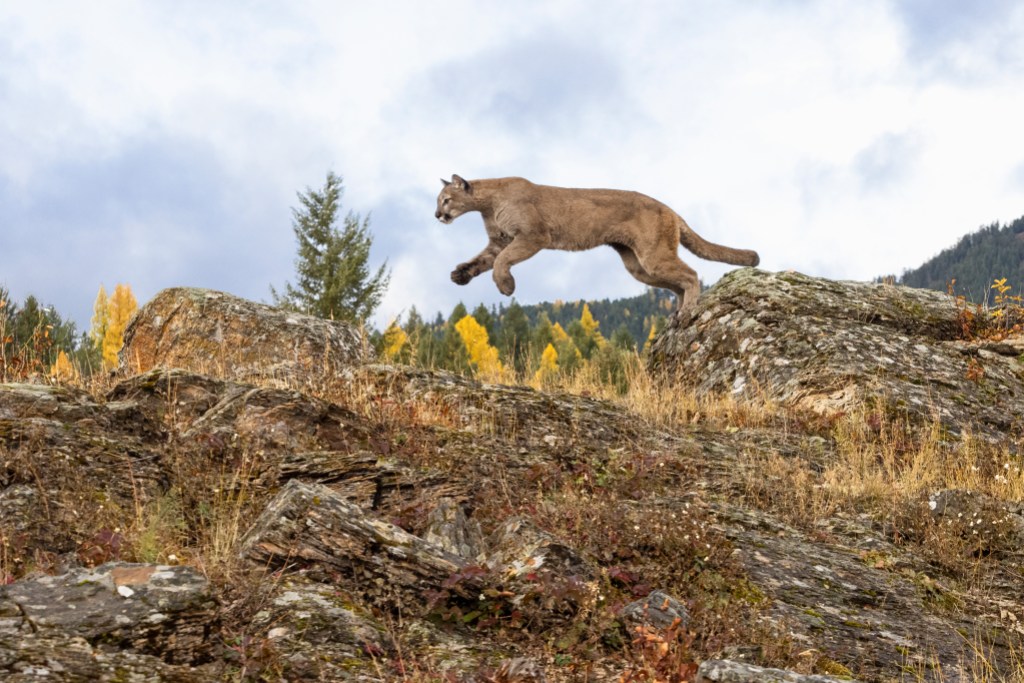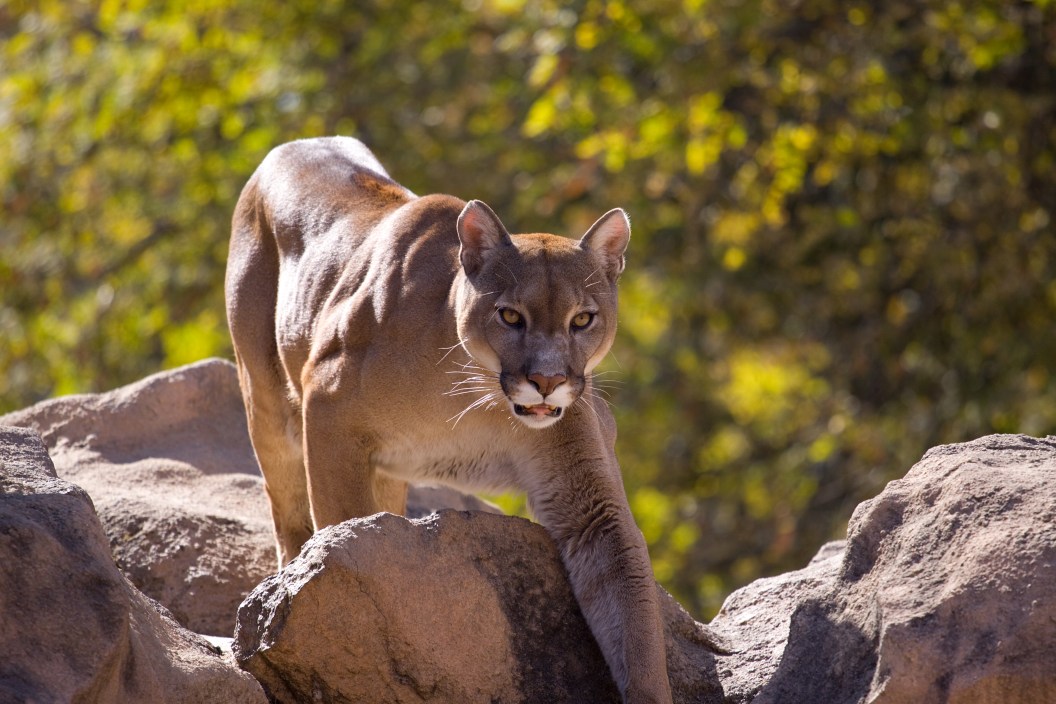Usually, hiking gives people a chance to relax and enjoy nature. But for one Utah hiker, a spring solo hike turned into a fight for his life.
On April 27, 70-year-old Evan Ray Nielsen headed out on a hike alone near his hometown of Spanish Fork, Utah. As he entered the Diamond Fork area of the canyon, a mountain lion attacked him.
With only a split second to make a decision, Nielsen grabbed a rock and used it to fend off the attacking puma.
"[The] mountain lion hit me right on the side, knocked me down the hill," Nielsen told KUTV. "I kind of hunched up or folded up, and it come down around behind me. And I hit it with a rock—just with my hand with a rock—and it took off."
Though Nielsen was out in nature, he said the cougar attack caught him completely off guard. And though he was able to fight off the large predator, he did not come out of the fray completely unscathed: The mountain lion's sharp claws scratched his arms up, and he had whiplash from being pounced on.
Once the mountain lion took off, Nielsen hiked back to the trailhead, climbed into his car, and drove to the closest hospital, where doctors bandaged his injuries. As a preventive measure, doctors gave him tetanus and rabies shots.
When reporters asked how he felt after the attack, Nielsen replied, "I'm feeling OK. Just shock. Let me tell you, it was a shock and a half."
According to Scott Root, conservation manager for Utah's Division of Wildlife Resources, officials are still looking for the aggressive animal. Root told reporters that mountain lion attacks in the area are "very rare."
"We do have mountain lions that may be lower in elevation. With all this deep snow, we had all the big game down here, so that probably brought a few lions down lower, too," Root explained to news outlets. "But now they should start working their way right back up the mountain because of the green-up season and the snow melting off."
He said there could be many different reasons why the animal attacked. "Several factors may have contributed to this attack—a younger lion may not be as aware of humans, it could be it was simply startled or defending a kill." Currently, the agency is using hounds to locate the aggressive puma, which will ultimately be euthanized. As unfortunate as it is, euthanasia is the only solution since the cougar has proven dangerous. If he attacks again, the next victim might not be as lucky.
How to Survive a Mountain Lion Attack

Getty Images, GarysFRP
Mountain lions are a seriously scary enemy. For starters, they're huge, weighing anywhere from 60 to 190 pounds on average. Then, they're not only super stealthy but they're also fast—so they can be tracking you, unbeknownst to you, and then pounce at up to 40 mph. Lastly, they are incredible strong in body body and jaw and have 2-inch-long canines and 2.5-inch claws.
Using a rock is only enough to stun the creature, which allowed Nielsen to get away. He's not the first hiker to turn to nature to combat an aggressive mountain lion. According to the National Park Service, a Southern California hiker also grabbed a rock to save his son from an attacking mountain lion some years ago.
While using a rock is quick-thinking, the NPS says that people have successfully used "sticks, caps, jackets, garden tools, and their bare hands" to fend off the typically-elusive wild cats.
Yes—as crazy as it sounds, people have fended off and killed a mountain lion with their bare hands. In 2019, a mountain lion attacked a Colorado man while he was running in the Horsetooth Mountain Open Space. According to the Colorado Parks & Wildlife official report, "The lion lunged at the runner, biting his face and wrist. He fought and broke free from the lion, killing the lion in self-defense. The runner sustained serious but non-life threatening injuries due to the attack."
Initially, the runner used a rock before getting his hands around the cougar's neck and choking it. The CPW said the runner pulled off this astounding feat, likely because the mountain lion was young and the runner was prepared.
The NPS suggests that hikers and joggers stay safe by not going out alone. If you head out with children in tow, keep them close by and don't let them run off ahead of you or play by the riverbanks. Mountain lions use the brush as cover to stalk their prey. The agency suggests keeping it at a distance if you run into a mountain lion. And whatever you do, don't try to run away; mountain lions can run up to 50 mph and will quickly overtake you. If you find yourself in hand-to-claw combat with a mountain lion, stay standing and don't break eye contact. They like to attack at the neck and head. Most importantly, try to look as big as possible to convince the animal that you are not prey.




